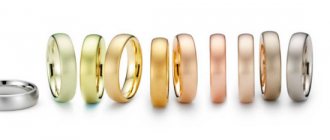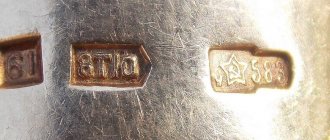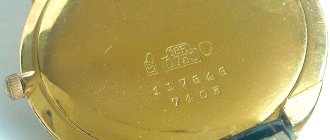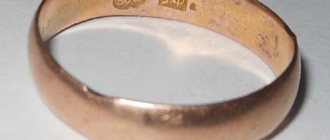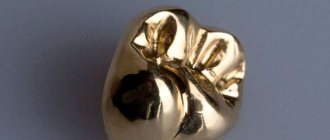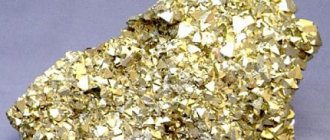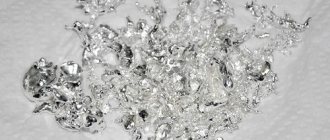Post updated: May 25, 2020
Gold is a noble metal that serves as a reflection of the power and wealth of the state or the wealth of a particular person. This metal is considered precious, because its quantity on the planet is limited, and its extraction requires special skills and a lot of time. For many centuries, this symbol of power has captivated seekers, leaders, and travelers. They are tirelessly searching for the gold of ancient peoples under the rubble of lost cities, and trying to identify ore deposits on mountain slopes and river valleys. What is pure gold, how to recognize it and how does it differ from other metals?
general information
Gold is a metal that is listed as number 79 on the periodic table of chemical elements. In Latin it is called Aurum, abbreviated as Au. Gold owes its name to its color, because in translation it means “yellow”. If we turn to mythological sources, then there is an obvious parallel with Aurora - the goddess of the morning dawn, who every day illuminates the sky with a morning golden strip of light. Gold is soft; the metal itself in its pure form is quite malleable and easily bends and changes shape.
It is not so easy to extract pure gold, because it can be hidden deep in the depths of rocks, or mixed with soil, silt, sand, and other minerals. Gold mining can be done industrially, in the form of mining a gold-bearing vein. In this case, the rock is sifted using special heavy equipment, leaving behind gold grains and throwing out unnecessary soil. Such equipment can also operate on a platform installed in a large body of water. A more painstaking, but quite relevant method of extraction is working in the mountains and on streams.
Typically, gold is washed out of the rocks and settles at the bottom of the stream. It is not always possible to find a large piece of metal; more often, prospectors are engaged in filtering silt and sand, during which gold grains settle at the bottom of special dishes. This method is possible due to the high density of the material. At the bottom you can also find nuggets - pieces of pure gold. However, the procedure is very labor intensive as the particles are often barely visible to the human eye.
Who needs gold?
Gold is being mined quite actively, especially now, due to growing demand and the capabilities of the latest technology. Its entire reserve is divided into pure gold and its alloys, of which, of course, there are more. Gold is used to back up national currencies, because everyone has heard about gold and foreign exchange reserves. Also, you can pay with gold, as well as invest your savings in it during an unstable economy.
More than a third of this metal on our planet is used in jewelry. In museums you can find jewelry and ritual items from ancient times, on the shelves of famous brands - rings, bracelets, earrings, pendants, and much more. In jewelry, gold is melted with the addition of other metals, but products can be coated with a thin layer of gold without impurities. Also, gold is actively used for industrial purposes and in dentistry.
How and where it is mined
Gold is distributed throughout the planet, but unevenly. In Russia, for example, all deposits are concentrated beyond the Urals - in the Far East and Eastern Siberia.
Chukotka, Amur Region, and Krasnoyarsk Territory are especially rich.
Almost always these are rocks that formed in the Precambrian. This period lasted four billion years and ended 539 million years ago. Gold is as old as the Earth.
Almost all reserves are extracted from primary deposits, but placers are not neglected.
Extraction is carried out in several ways, the simplest of which is flushing. Dense gold remains in the sieve with heavy fractions of sand (“slich”), and lighter compounds are washed out. This method is accessible even to novice prospectors. Used on placers.
More complex, industrial methods:
- amalgamation;
- cyanidation
- regeneration.
It is extracted from other metals and ores by refining. Entire factories are being built for this, but amateurs are trying to do the procedure at home.
Designations on precious metals
A gram of pure gold is expensive. The price of gold depends on its quality and percentage of pure metal content. By the way, in nature you will not find its maximum possible concentration; the mined ore is purified using refining, directing atoms of another substance into the metal structure to remove excess. As a result, you can get the most ideal metal, with almost 100% gold content.
How to understand how good an ingot or product is? Each of them, as a rule, has a marking that tells about the manufacturing company, the percentage of gold and its purity. There are several marking systems, but in any case a stamp is applied to the product - embossing containing information about the sample. This may be an abbreviation for the birthday person of a jewelry factory. In this case, the code consists of four letters, among which the first is the launch year code, the second is the code of the State Inspectorate of the Assay Factory, and the last two are the manufacturer’s code. Government control marks include the emblem of the country, which may be a coat of arms or a specially approved sign, and data on the composition of the gold. It is noteworthy that all precious metals have a certain stamp pattern.
Hallmarks on gold items sold in Russia.
Gold stamping can be applied in various ways; laser is the most accurate and accurate. Now not a single product can be put up for sale without labeling; all measurements are carried out in a government agency, which eliminates the risk of fraud.
Alloy advantages
Most often you can find 14-karat gold on sale. 585 standard is usually represented by the following ratio: 58.5% - the content of the most precious metal, 33% - copper and 8% silver.
Why does copper take second place? The fact is that this metal is the most resistant to deformation. In addition, copper has a reddish tint, which allows you to change the color of gold. It is also good for making jewelry that is often exposed to water. Copper is slightly susceptible to corrosion, so a 585 ring, even on the hand of a housewife, will not lose its beauty for a long time.
Found a violation? Report content
Systems for calculating impurities in gold
Pure gold, along with alloys, has such a quality assessment criterion as fineness. This is a numerical value that will tell you the percentage of impurities.
There are several measurement systems:
- Carats;
- Metric system;
- Spool valves.
Spool test is an attribute of Tsarist Russia; now it is found only in rare jewelry. The metric system is typical for the post-Soviet space, and in the West they prefer carats. Indicators in carats can range from 8 to 24, in the metric system - from 375 to 999. If we talk about compliance, we can give an example of equalizing both systems:
- 375 sample - 9 carats;
- 500 standard - 12 carats;
- 585 - 14 carats;
- 750 - 18 carats.
Of course, the numerical values are not arbitrary; they are legalized by GOST, which may be different in each country.
In Russia there are hallmark values: 375, 500, 583, 585, 750, 958, 999. Gold up to 375 hallmark is not used in Russia, but in Europe there are jewelry with a lower value.
Best cleaning result
Pure gold is 999 fine or 24 carats according to the European system. This kind of gold is also called red gold. It is used to produce bars that fill vaults and coins that are usually purchased by collectors. In the east, jewelry is even made from gold of this standard. In our everyday life, such gold is used for top coating and gilding. It can be used on jewelry, watches, furniture, figurines, and interior objects. Such a layer will not only protect from external influences, due to the increased inertness of the metal, but will also add nobility to antique-finished objects.
The question of how many carats are in a bar should not arise in pure gold. The purest sample is called “five nines” because its value looks like 99.999. It corresponds to 1000 in fineness and 24 in carats. Its color is natural yellow. The surface is shiny, the metal itself is very soft, it can be scratched with a fingernail. One of its advantages is malleability and ductility. The material is so malleable that it can be stretched to enormous lengths with microscopic thickness, or, on the contrary, flattened into the thinnest sheet without violating the integrity of the metal. Bank gold, which is quoted on the international market, corresponds to the figure of four nines (99.99).
High purity gold coins
If you prefer high purity gold coins, look for coins with a stated fineness of 9999. Gold coins of this purity are produced in many countries around the world, including Australia, Austria, Canada, Israel, Kazakhstan, Malaysia, New Zealand, Poland and the United States.
Typically, these countries mint certain gold coins at the highest purity available. In the United States, for example, the purest gold coin you can buy is the American Buffalo coin.
A complete guide to gold coins and instructions for purchasing them in 2022 can be found in a special article at the link.
Source: Jon Cavuoto, FirstNationalBullion, August 23, 2022 | Translation: Gold Reserve
Ingots
Of course, the metal comes in different forms, and the banking “format” of pure gold is the bullion. It can be produced by sheet metal, stamping or cast in one piece. The mass of the precious metal is measured in ounces or grams. There are bars that weigh 1 gram, these are used as gifts or payments on special occasions. In the bank you can buy bars of various sizes - 5, 10, 20, 50, 100, 250, 500 grams. The standard bar in the banking industry is 1000 grams.
An ounce is an international standard that indicates the volume and quality of an ingot. A troy ounce contains 31.1034768 grams. This measure originated from coins that were used in the Middle Ages. The figure for one ounce may vary among different historical sources. The Jewish unit of measurement is also known - the shekel. One shekel is 11.4 grams of pure metal. Asian countries have their own measurement measures.
What is it like
Gold is part of a separate group of precious metals.
Who knows, despising the mob and slaves, arrogant gold “does not want” to come into contact (chemical reactions) with other elements. It has always been precious - the beauty, brilliance, and durability of the metal were reserved for aristocrats and other favorites of fate.
Chemical and physical properties:
- Pure gold has a very low hardness - 2.5-3. Anyone who has read books about history remembers that gold coins were often “tested.” Real coins left teeth marks, but fake ones (with a large amount of impurities, usually copper) did not.
- Gold melts at a temperature of 1064°C; If you heat it to 2947 °C, it will begin to boil and evaporate.
- The specific gravity of the metal is 19.3 g/cm3. A kilogram of gold will easily fit in a pocket or handbag - it can be easily “packed” into a cube with a side of 3.7 cm.
- The malleability of the metal is amazing. Just one gram can be rolled into a sheet with an area of half a square meter. This is "gold leaf".
- For the production of jewelry, gold has another attractive property. The metal is very flexible and malleable, which means it bends and stretches easily.
- The crystal structure of the metal lattice is cubic, face-centered.
- Chemically, the metal is very inert. Under normal conditions it does not want to react with other elements. The exception is mercury.
- The solar metal can be dissolved in “aqua regia” (a mixture of nitric and hydrochloric acids in a ratio of 1:3). Slowly, but reacts with cyanide, potassium iodide, liquid bromine.
Please note: your gold jewelry should be protected from iodine, mercury, and chlorine.
| Name, symbol, number | Gold / Aurum (Au), 79 |
| Atomic mass (molar mass) | 196.966569(4)[1] a. e.m. (g/mol) |
| Electronic configuration | [Xe] 4f14 5d10 6s1 |
| Atomic radius | 144 pm |
| Chemical properties | |
| Covalent radius | 134 pm |
| Ion radius | (−3e) 185 (+1e) 137 pm |
| Electronegativity | 2.64 (Pauling scale) |
| Electrode potential | Au←Au3+ 1.50 V, Au←Au+ 1.70 V |
| Oxidation states | −1,1,3,5 |
| Ionization energy (first electron) | 889.3 (9.22) kJ/mol (eV) |
| Thermodynamic properties of a simple substance | |
| Density (at normal conditions) | 19.3-19.32[2][3] g/cm³ |
| Melting temperature | 1337.33 K (1064.18 °C, 1947.52 °F)[2] |
| Boiling temperature | 3129 K (2856 °C, 5173 °F)[2] |
| Ud. heat of fusion | 12.68 kJ/mol |
| Ud. heat of vaporization | ~340 kJ/mol |
| Molar heat capacity | 25.39[4] J/(K mol) |
| Molar volume | 10.2 cm³/mol |
| Crystal lattice of a simple substance | |
| Lattice structure | cubic face-centered Cu type, space group Fm3m |
| Lattice parameters | 4.0781 Å |
| c/a ratio | 1 |
| Debye temperature | 170.00 K |
| Other characteristics | |
| Thermal conductivity | (300 K) 318 W/(m K) |
| CAS number | 7440-57-5 |
We recommend: ANTIMONY - from eye beauty to batteries
Gold on the international market
In order to find out how many carats the metal that is pure gold corresponds to, you can pay attention to the precious metals market. Bidding takes place on yellow metal of at least 999.9 purity. The precious metals index depends on the situation in the world and trading on the securities market. The price varies depending on the interest in buying metal. Most often, demand appears when the economy is destabilized, when large investors transfer their assets from foreign currency to more reliable metal ones.
Purchasing pure gold is a win-win investment; over the years of its mining, interest in it has never waned. If the acquisition of a block of shares may not be justified due to the bankruptcy of the company or a decrease in its value on the market, then there are fewer risks when purchasing gold. If you want to invest in the future, you should choose this asset. Over 10-15 years, the price will most likely allow you to remain a winner, and if you don’t make a profit, then keep your funds in full. You can buy jewelry for this, but a number of subtleties await you here. Selling jewelry after 2-3 years is not profitable for you. The price depends on tastes and fashion, since the design of the jewelry is very important, so there is a risk of not finding a buyer. In addition, the jewelry is made from an alloy, and prices for it are less predictable. By investing in pure gold in the form of coins or small bars, you are making a smarter move.
Gold is an indicator of wealth and a reward, decoration and decoration. The universal and rare precious metal has ruled the world for many centuries without losing ground. If your cherished dream is to purchase your own ingot, choose a high-quality sample that complies with GOST and international standards. You can always find one at a bank; choose the one that inspires you the most confidence.
Benefits of 585 sample
Thanks to the carefully adjusted ratio of metals, 585 sample has the following advantages:
- Gold is resistant to friction.
- Pairs perfectly with precious stones.
- Not prone to corrosion.
- It doesn't get dark.
If you have ever worn jewelry made from silver or other alloys, then you know how quickly jewelry loses its original color. And some also leave marks on the skin. A gold ring or earrings will never turn black or green; you only need to clean them once a year to maintain shine and color.


